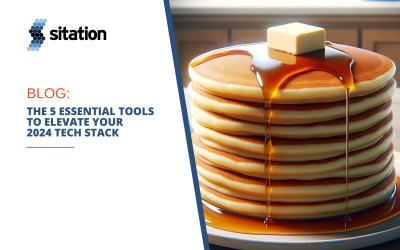The pandemic has been a major catalyst for the growth of e-commerce. Online shopping was already on the rise before the pandemic hit, but the health crisis accelerated its adoption and resulted in more businesses moving online. According to a report from e-marketer, global e-commerce sales are expected to reach $5.5 trillion in 2022. 
The pandemic has also spurred innovation in e-commerce. One of the most notable changes has been the rise of contactless delivery, as customers seek to minimize contact with others. This has led to the development of new technologies like drone delivery. According to a report from Goldman Sachs, the pandemic could accelerate the adoption of these technologies by up to five years.
So… What Now?
There’s no question that the world is emerging from this global health crisis with a fresh new perspective on modern commerce, but it’s still too early to say definitively what the long-term effects of the pandemic will be on e-commerce. Will trends continue? Will market participants like brands, retailers, distributors, and manufacturers, even local businesses, continue to see the benefits and stick to the new business models of the last 3 years?
Nobody can predict the future, but a few things are clear.
First, pandemics are not going away anytime soon – this one was particularly terrible, but certainly not the first and only. The events of the last 3 years not only pushed adoption and growth of the e-commerce market; it punished those who were not able to invest and adapt. There’s a big lesson there for management that’s not easily ignored.
Second, e-commerce is here to stay and will continue to grow in the years to come. Macro trends demonstrate this clearly going back 25 years, and while a small reversion to the mean might occur, there’s no reason to think we’ll all buck that trend, drop our phones, and rush back into big box stores in such numbers that the long-term trends of e-commerce growth would suddenly be reversed.
Finally, the post-pandemic world will continue to spur innovation in e-commerce, as businesses seek ways not only to minimize contact and protect their customers, but to further ride the wave of mobile/app/online shopping, BOPUS, work from home, and more.
What Does This Mean for PIM & PXM?
At Sitation, we believe that PIM/PXM is just coming into its heydey. As with other e-commerce technologies, the pandemic has brought greater market awareness, and has accelerated adoption quickly as firms have prioritized growing e-commerce sales.
Recent stock market performance suggests an unwinding of pandemic-era investment priorities – just have a look at Peleton and Netflix stock performance in recent months.
But when it comes to general trends in e-commerce, like PIM/PXM, it’s important to remember that this is where things were headed anyway. We identified PIM as an area of growth long before the pandemic, and have continued to see the market (and our business!) grow considerably as a result.
The work that Sitation does as an expert service provider in digital merchandising brings efficiency, process, lower costs, and better performance in online channels. PIM platforms like Salsify and Akeneo (our two largest platform partners), deliver lasting benefits and are simply a better and more cost-effective way to manage product data. Pandemic or not, the secret is out about PIM – it works, and customers want it.
We see a bright future ahead, and we look forward to continuing to help our customers build and execute the strategies and processes they need to realize the business value of their investments in product information management and product experience management.
Contact us today and let’s get started.




